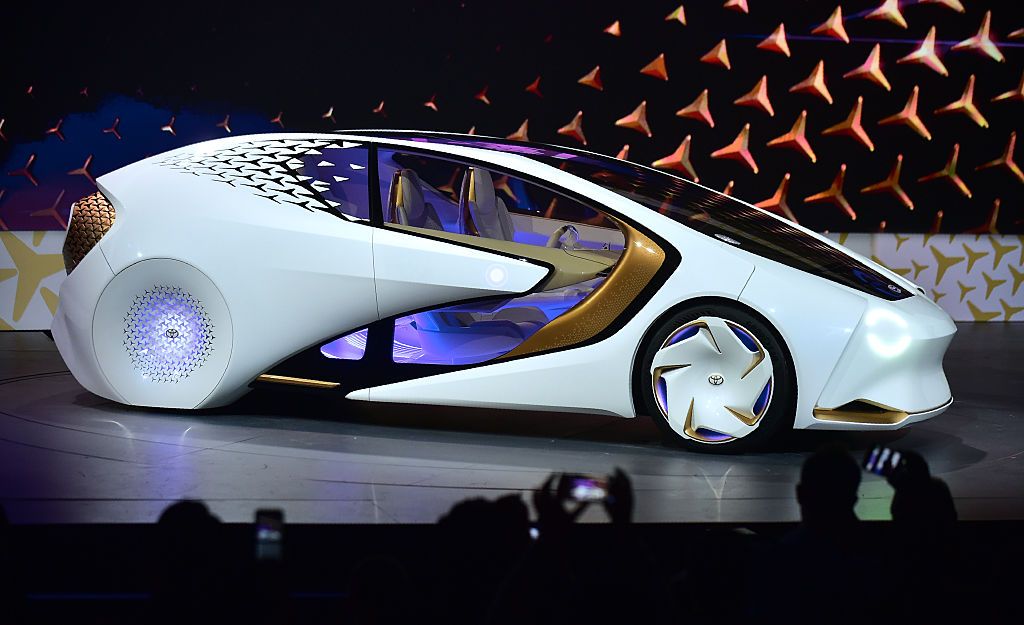Golden Ages seem pretty common. That is, there are plenty of them -- golden age of illustration, of comic books, of etc. So I might as well add one more to the pile: Golden Age of General Motors Dream Cars.
I place that about 1954-56 when a good many interesting designs appeared in GM's Motorama traveling shows. Today's subject is the Pontiac Club de Mer that appeared in the 1956 Motorama (Wikipedia entry here). The car itself has little if anything nautical about it, but GM publicists took care to show it in seashore environments for non-studio photos (note the photo above and two of the photos below).
The Club de Mer's styling is actually a kind of blending of aircraft and racing car themes in the form of impractical details. Examples include a small tail fin mounted atop where a trunk lid would be (there was none), and dual streamlined windshields that would probably stream wind directly into the driver's and passenger's faces (note the height of the windshields compared to the position of the model in the photo above).
But, Hey!, the Club de Mer was just a show car. And a rather fun one at that.
Studio publicity photo of Harley Earl (left) and a Club de Mer clay model. In the background is an airbrushed profile view.
Publicity photo showing the Club de Mer by la mer, probably in Florida. This, and most of the photos below indicate how low the car was: Wikipedia has it as 38.401 inches (975 mm). But it was drivable, so perhaps the car's main value to GM apart from publicity was in the engineering steps taken to make it work. Note the low air intake -- something this extreme not seen on mid-50s American production cars. Also, the familiar Pontiac "streaks" have been reshaped and merge with air intakes near the cowling, a nice touch.
Another pose near water. Some relief is found in the (possibly non-functional) air outlets on the door and the character line that wraps to the rear. The little four-pointed stars on the side are another Pontiac brand cue.
Even though the Club de Mer has a relatively simple, rounded-off shape, GM's stylists were able to impart enough of a sense of tension to eliminate a flabby look. Being a show car, no front bumper was needed.
Another view indicating how low the car was. The symbol above the Pontiac name was a brand identifier that didn't appear on production cars until the 1957 model year.
As the Wikipedia entry states, the Club de Mer was destroyed, though a scale model survived. Eventually an enthusiast had this replica created. I include this Barrett-Jackson photo to show what the rear end looked like. Clean, aside from that silly fin. And there is a rear bumper of sorts.
Golden Ages seem pretty common. That is, there are plenty of them -- golden age of illustration, of comic books, of etc. So I might as well add one more to the pile: Golden Age of General Motors Dream Cars.
I place that about 1954-56 when a good many interesting designs appeared in GM's Motorama traveling shows. Today's subject is the Pontiac Club de Mer that appeared in the 1956 Motorama (Wikipedia entry here). The car itself has little if anything nautical about it, but GM publicists took care to show it in seashore environments for non-studio photos (note the photo above and two of the photos below).
The Club de Mer's styling is actually a kind of blending of aircraft and racing car themes in the form of impractical details. Examples include a small tail fin mounted atop where a trunk lid would be (there was none), and dual streamlined windshields that would probably stream wind directly into the driver's and passenger's faces (note the height of the windshields compared to the position of the model in the photo above).
But, Hey!, the Club de Mer was just a show car. And a rather fun one at that.
Studio publicity photo of Harley Earl (left) and a Club de Mer clay model. In the background is an airbrushed profile view.
Publicity photo showing the Club de Mer by la mer, probably in Florida. This, and most of the photos below indicate how low the car was: Wikipedia has it as 38.401 inches (975 mm). But it was drivable, so perhaps the car's main value to GM apart from publicity was in the engineering steps taken to make it work. Note the low air intake -- something this extreme not seen on mid-50s American production cars. Also, the familiar Pontiac "streaks" have been reshaped and merge with air intakes near the cowling, a nice touch.
Another pose near water. Some relief is found in the (possibly non-functional) air outlets on the door and the character line that wraps to the rear. The little four-pointed stars on the side are another Pontiac brand cue.
Even though the Club de Mer has a relatively simple, rounded-off shape, GM's stylists were able to impart enough of a sense of tension to eliminate a flabby look. Being a show car, no front bumper was needed.
Another view indicating how low the car was. The symbol above the Pontiac name was a brand identifier that didn't appear on production cars until the 1957 model year.
As the Wikipedia entry states, the Club de Mer was destroyed, though a scale model survived. Eventually an enthusiast had this replica created. I include this Barrett-Jackson photo to show what the rear end looked like. Clean, aside from that silly fin. And there is a rear bumper of sorts.



















EmoticonEmoticon